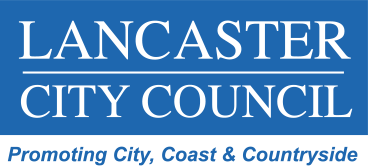Bring Me Laughter: Scribing

This week's Bring Me Laughter blog from Gil Graystone shows you some of the lovely drawings from the sessions' live scribing and features an activity for you to try out at home.
Find out more about the dementia arts project at Bring Me Laughter and click Bring Me Laughter at Home for more content for you to check out and take part in from home.
A really important part of the Bring Me Laughter project has been the simple act of looking and describing what we see in different ways. We thought we’d share some of the beautiful, poignant pieces of art that come out of these sessions and encourage you to try yourselves at home.
Bring Me Laughter is a ground-breaking and nationally significant programme, largely due to its sensitive and thoughtful approach to both recording the impact of the sessions and to the participants, caregivers, family and friends. A key part of this is ethnography – the study and scientific recording of people.
We’re very lucky to have North West Arts Consultant and Ethnographer, Jo Kay evaluating the project, who attends the sessions as observer and participant. A fantastic and valuable member of the team, Jo says:
“The idea is to become a trusted member of the group or welcome visitor, so that the researcher’s presence feels as natural as possible to the participants, enabling them to focus on enjoying the sessions. [Over] time, the researcher will gain rich, human insight into the relationship between the person living with dementia and their caregiver to observe if and how their behaviour and feelings change during the course of their involvement in the programme.”
In addition to this in-depth research, we introduced the use of live scribing – the drawing of the session in action – as a complementary evaluative tool to record the process, capturing key moments and messages.
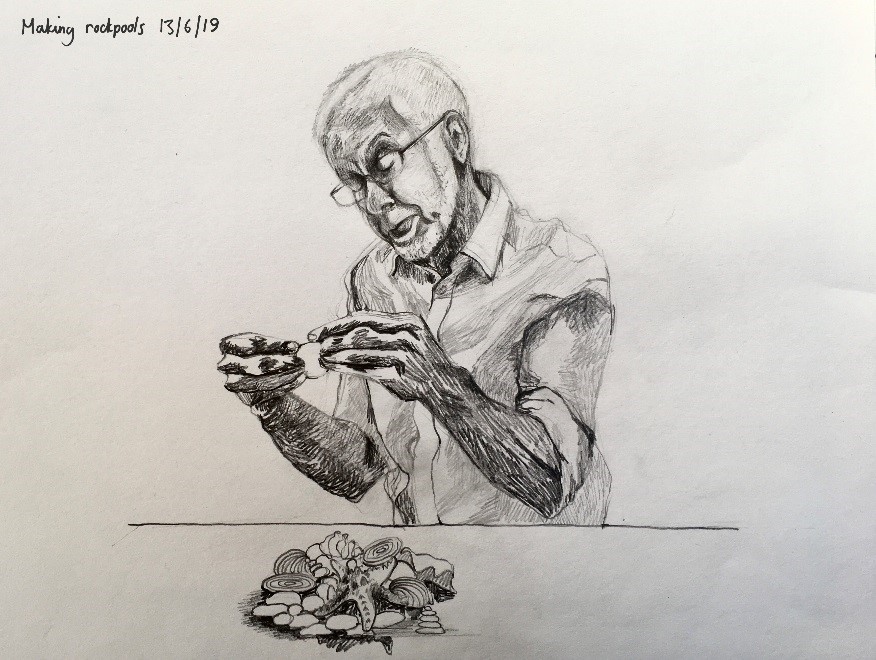
We invited artist, Elizabeth Clough to join the team. Elizabeth places herself in the room at a distance from the group and draws the action that she observes. This could be the essence of a specific moment, a facial expression, or a special relationship.
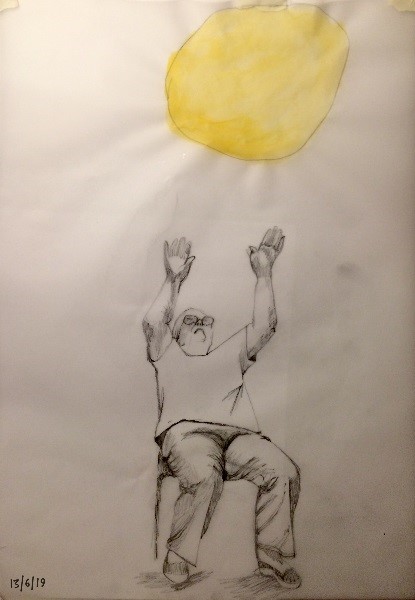
“When drawing I find the nature of my observations different to joining a conversation or simply observing. Drawing requires you to step back from the action in order to look, and truly see what is visually unfolding. Instead of focusing on words, the physical relationships between people, body language and facial expression comes to the fore. This seems particularly relevant for sessions based around communal activity and group interactions where words are not necessarily the most important stream of communication.” (Elizabeth)
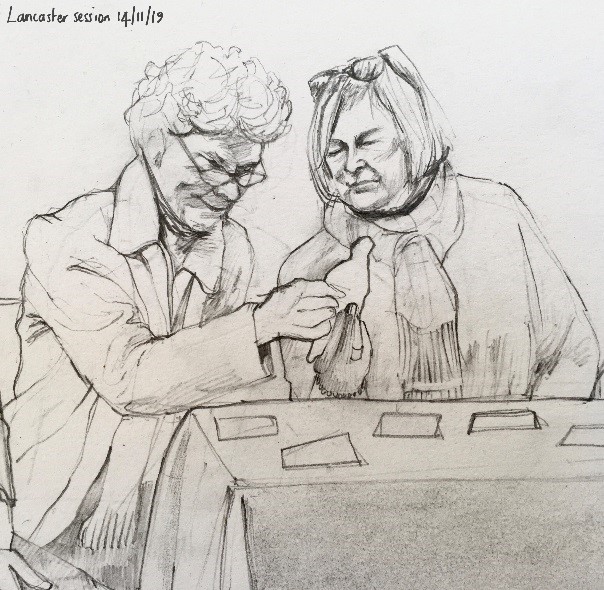
“Drawing also pushes me to capture the essence of a moment quickly because there is no time to deliberate. This can help me capture an image based on instinct rather than considered thought, providing an antidote to more analytical forms of evaluation."
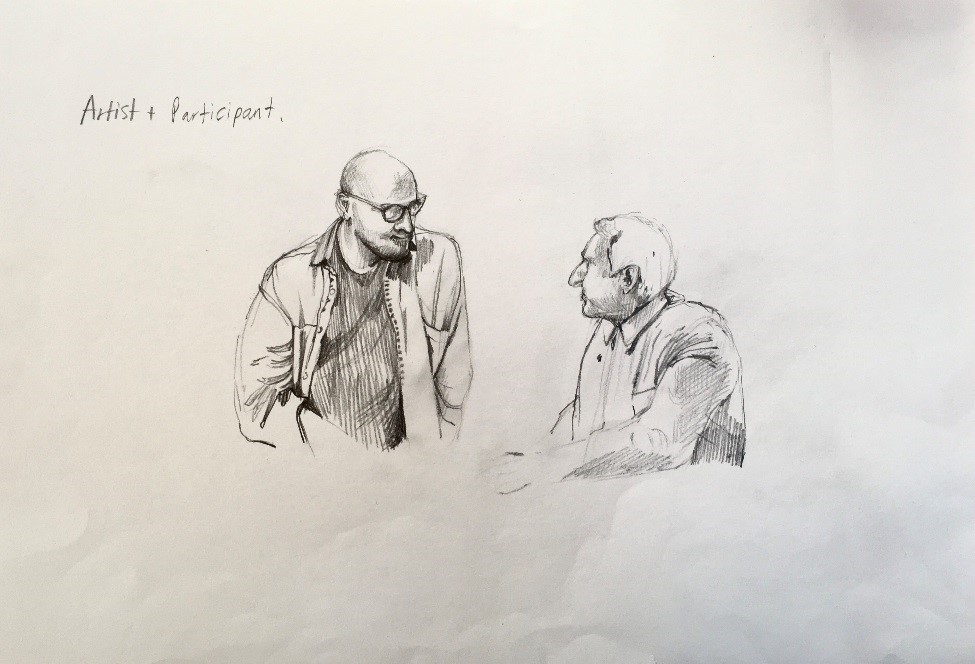
“It was important to me to capture two things in particular. The physicality of the sessions: They were dynamic, with much movement and group interaction. This movement and physical contact seemed to generate playfulness and helped everyone loosen up and relax. I also wanted to capture the tactile nature of the sessions, each time I attended there was a different collection of intriguing objects/scenes to explore. These were used to stimulate ideas for songs, games and making activities forming the basis of a creative process familiar to any artist. The participants were given the freedom to explore this. This kind of activity is based in the moment and requires no context, therefore seemed liberating and valuable to those living with dementia and their caregivers.”

ACTIVITY:
Lockdown has created an unusual and unprecedented situation for us all.
Why not scribe a morning/afternoon/evening where you are living in lockdown? You can include words to capture mood, and ideas. You can use any medium and include collage if that works for you.
You could even submit them to our reopening exhibition, Inside Out.
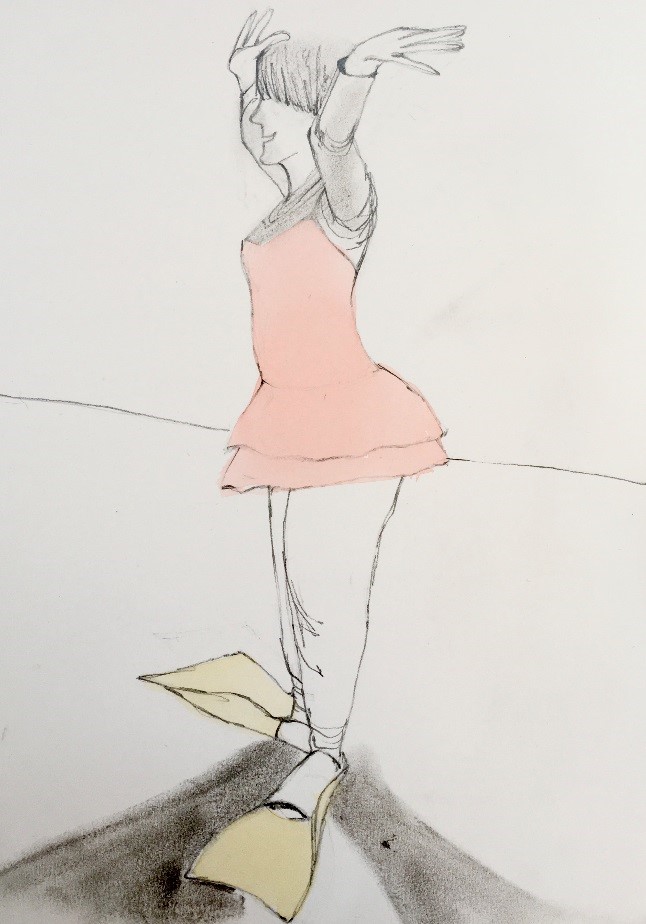
Elizabeth Clough is an Artist and Designer from the Yorkshire Dales. She studied at The Royal Drawing School and Leeds College of Art. Her compulsion to make things fuels an interest in the social importance of the creative process, particularly at a grassroots level and as an element of everyday life, folk culture and celebration. Elizabeth is director and curator of Red Door Studios, an artist led project space in London E6, where she is currently based. She has exhibited nationally and internationally.
You can find her more of her here.
We are planning an exhibition of Elizabeth’s drawings of the project at The Dukes’ Gallery.


